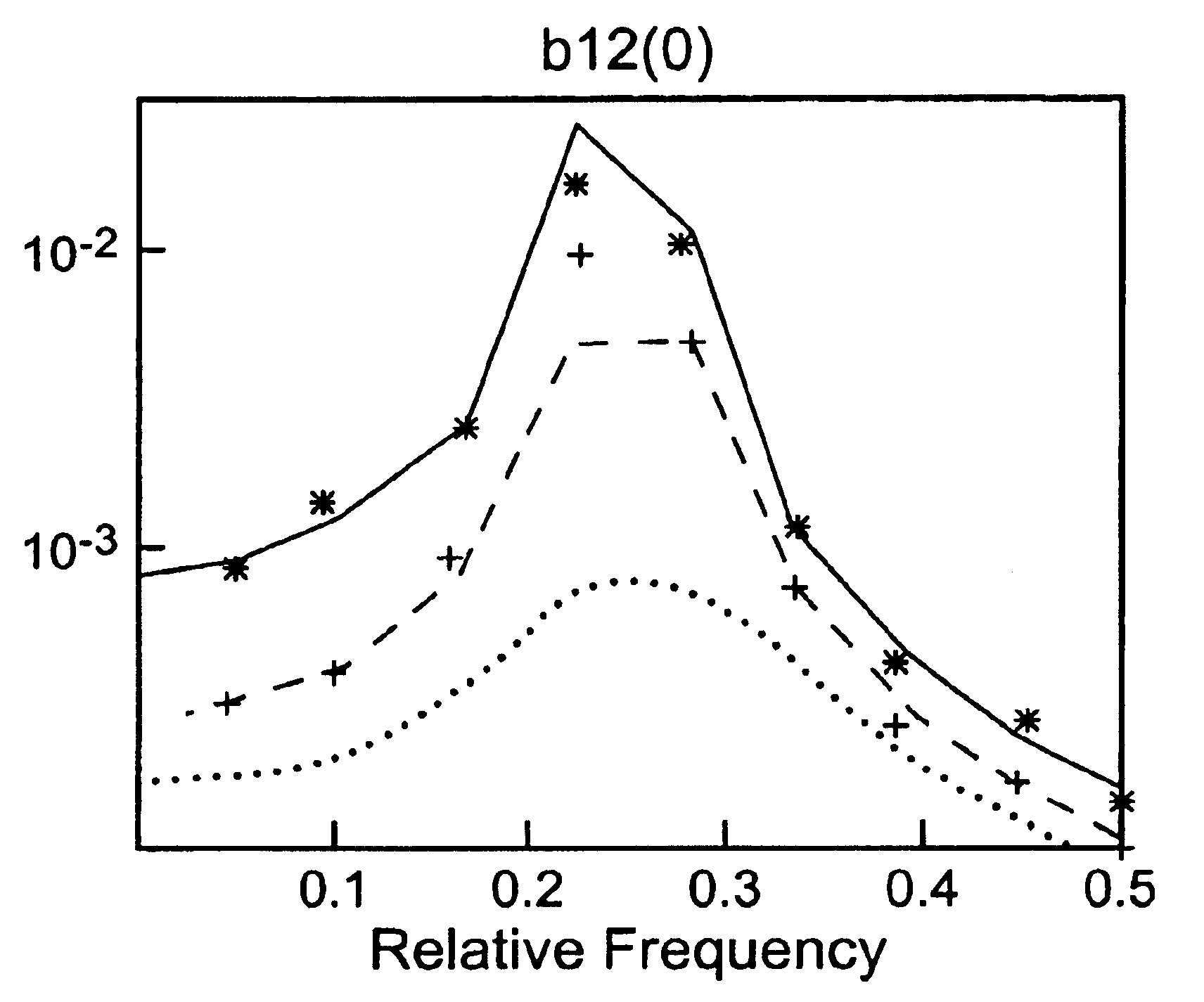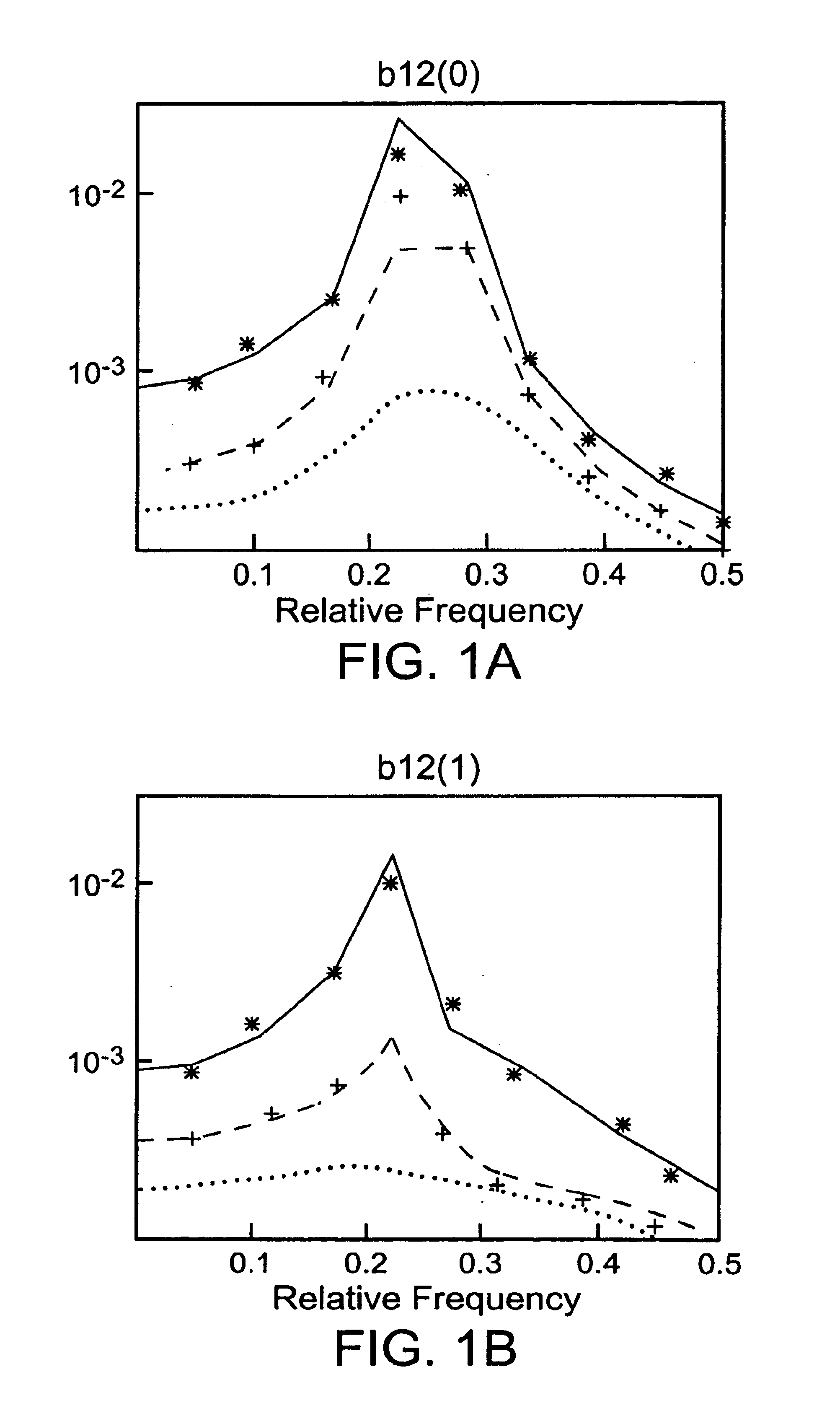Method and device for separating a mixture of source signals
a source signal and mixture technology, applied in the field of methods and devices for separating a mixture of source signals, can solve the problems of nontrivial process and unknown spectral densities of source signals,
- Summary
- Abstract
- Description
- Claims
- Application Information
AI Technical Summary
Benefits of technology
Problems solved by technology
Method used
Image
Examples
Embodiment Construction
In the present invention a signal separation algorithm is derived and presented. A main result of the analys is an optimal weighting matrix. The weighting matrix is used to device a practical algorithm for signal separation of dynamically mixed sources. The derived algorithm significantly improves the parameter estimates in cases where the sources have similar color. In addition the statistical analysis can be used to reveal attainable (asymptotic) parameter variance given a number of known parameters.
The basis for the source signals, in the present paper, are M mutually uncorrelated white sequences. These white sequences are termed source generating signals and denoted by ξk(n) where k=1, . . . , M. The source generating signals are convolved with linear time-invariant filters Gk(q) / Fk(q) and the outputs are, x(n)=[x1(n) … xM(n)]T=K(q)ξ(n)=diag (G1(q)F1(q), … ,GM(q)FM(q))[ξ1(n)⋮ξM(n)],
referred to as the source signals and where q and T is the time shift opera...
PUM
 Login to View More
Login to View More Abstract
Description
Claims
Application Information
 Login to View More
Login to View More - R&D
- Intellectual Property
- Life Sciences
- Materials
- Tech Scout
- Unparalleled Data Quality
- Higher Quality Content
- 60% Fewer Hallucinations
Browse by: Latest US Patents, China's latest patents, Technical Efficacy Thesaurus, Application Domain, Technology Topic, Popular Technical Reports.
© 2025 PatSnap. All rights reserved.Legal|Privacy policy|Modern Slavery Act Transparency Statement|Sitemap|About US| Contact US: help@patsnap.com



